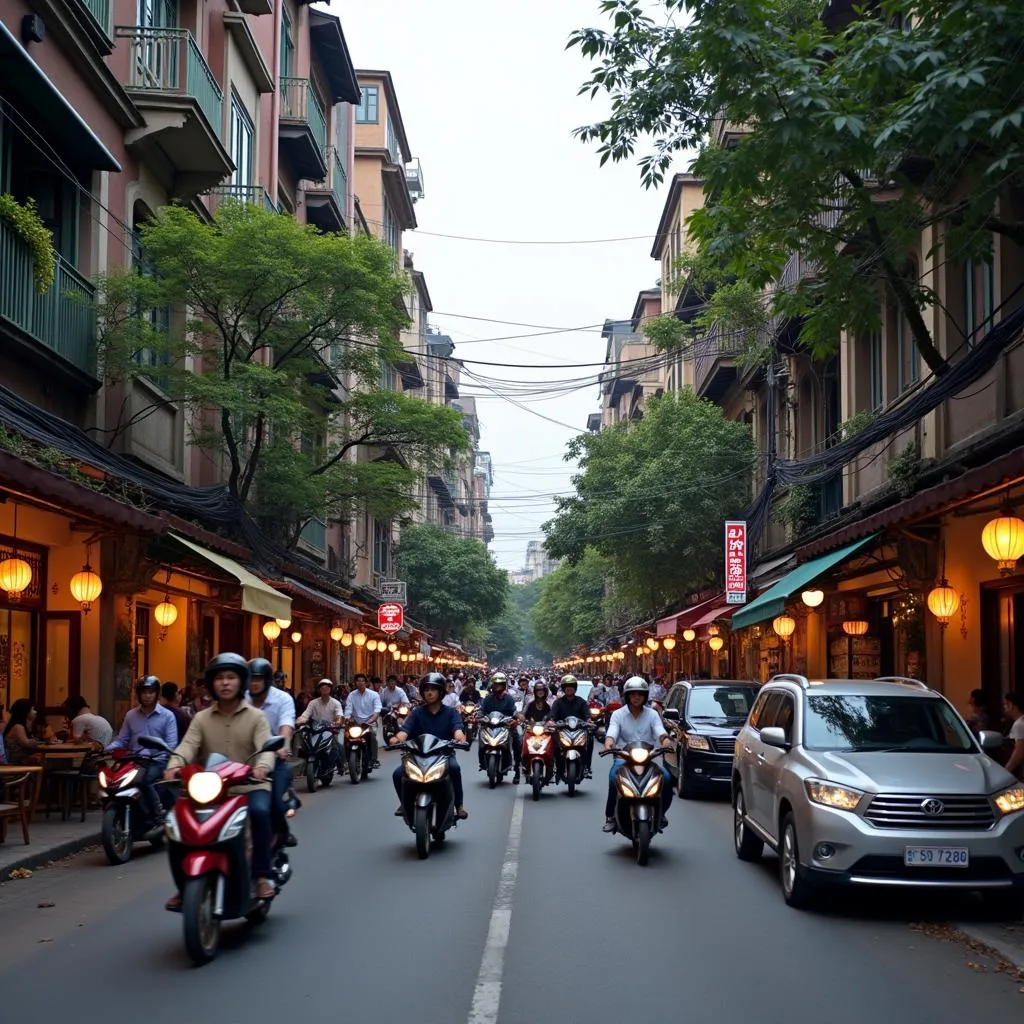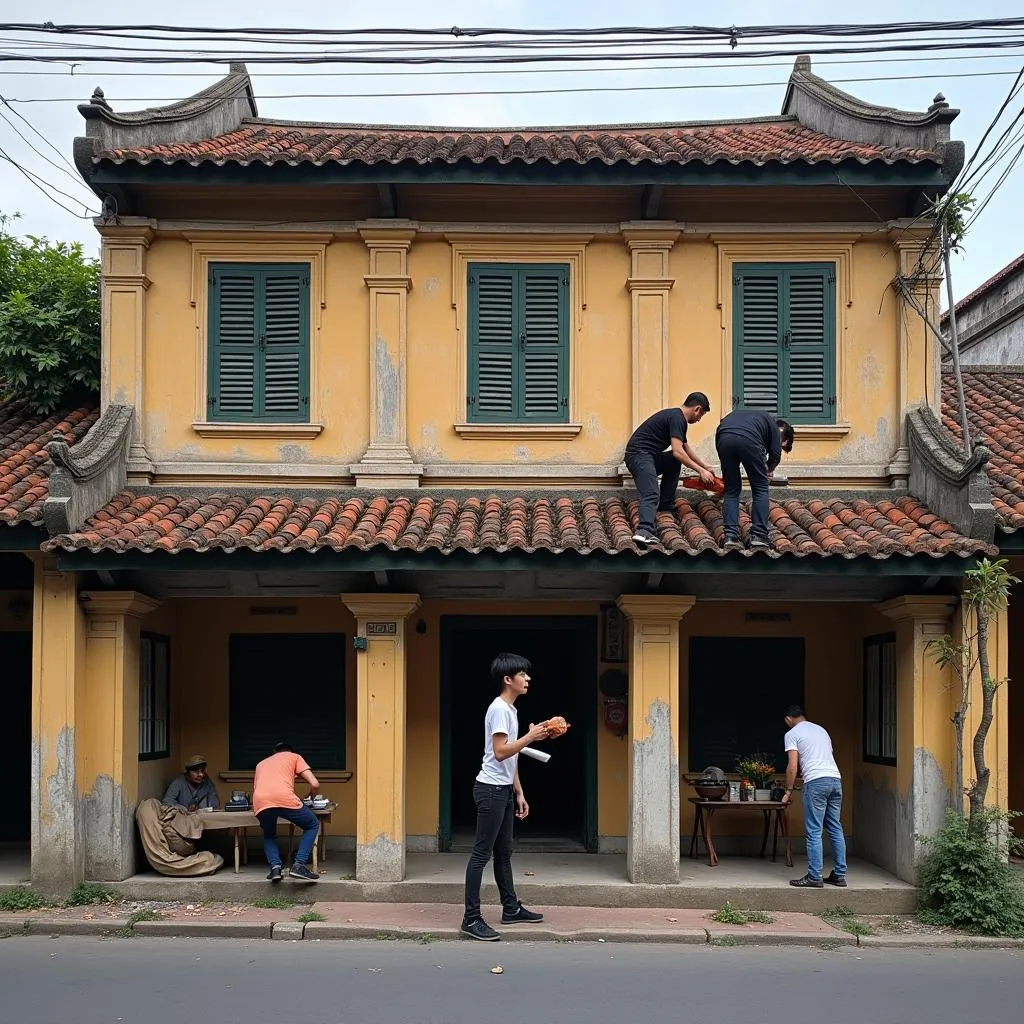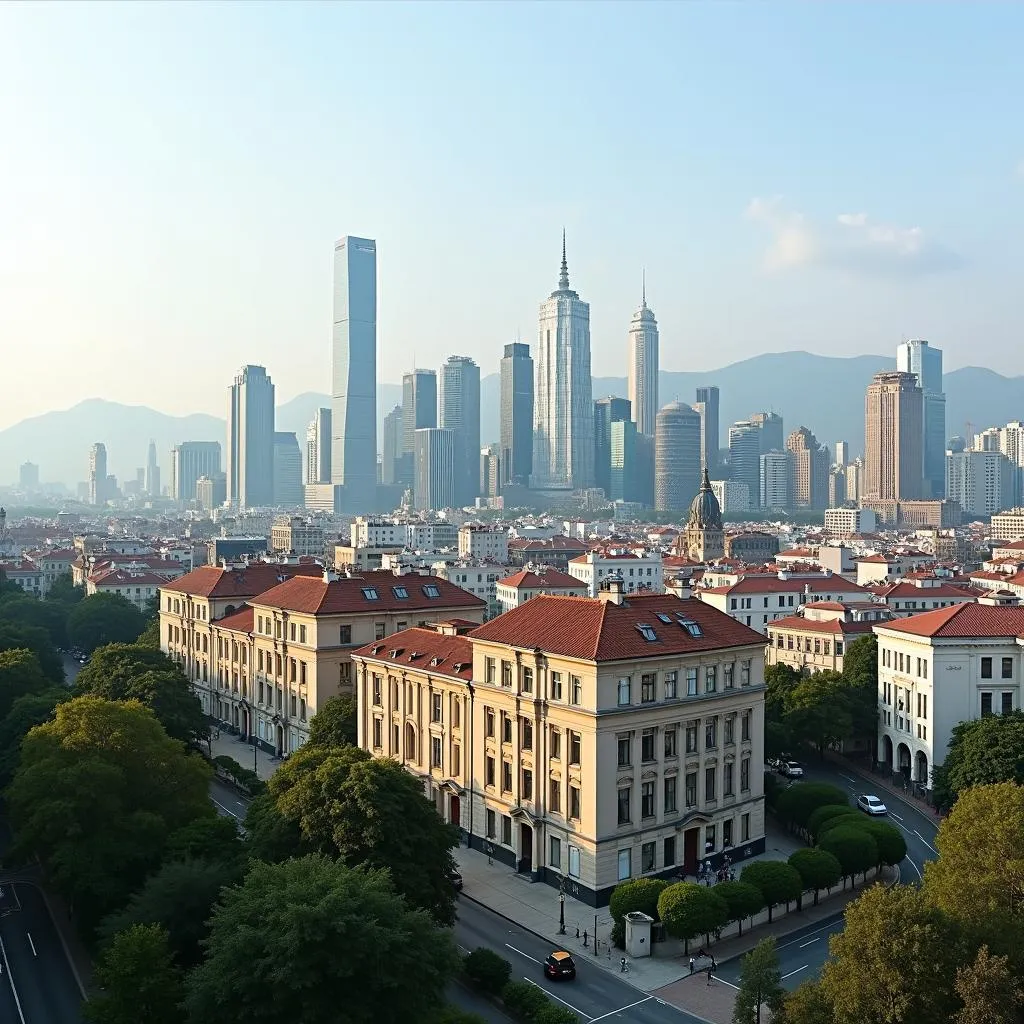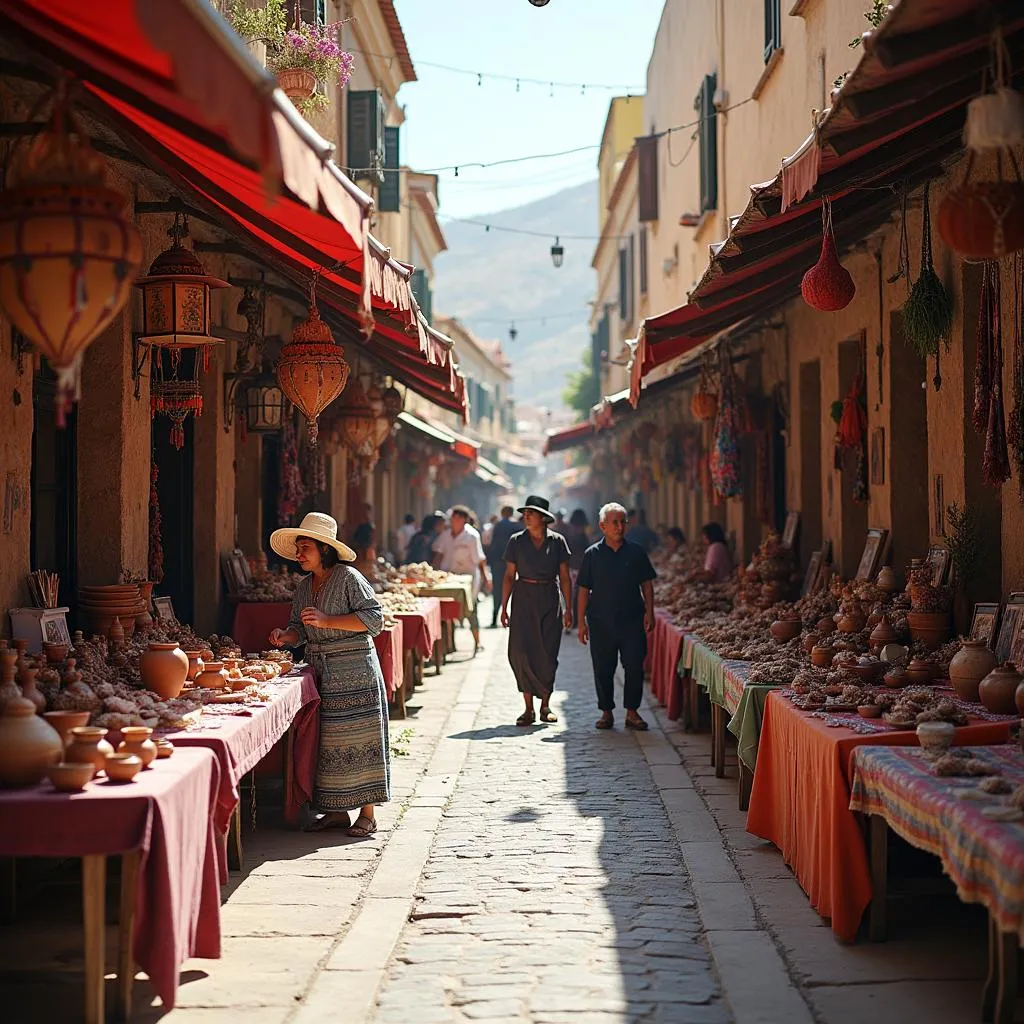Historical landmarks often feature prominently in IELTS Speaking exams, particularly when candidates are asked to describe significant places in their cities. This topic allows examiners to assess a candidate’s ability to articulate local knowledge, cultural awareness, and descriptive language skills. Let’s explore how to excel in answering questions about historically significant places in your city.
 IELTS Speaking – Describe a Famous River
IELTS Speaking – Describe a Famous River
Describe a famous river in your country can be a related topic that may also come up in IELTS Speaking tests, as rivers often hold historical importance in many cities and countries.
Part 1: Introduction and Interview
In this section, the examiner may ask general questions about your city and its historical places. Here are some common questions you might encounter:
- Are there many historical places in your city?
- Do you enjoy visiting historical sites?
- How do you think historical places contribute to a city’s identity?
Let’s look at a sample answer for the first question:
Examiner: Are there many historical places in your city?
Candidate (Band 8-9 response): Absolutely. My city, Hanoi, is steeped in history and boasts numerous historical landmarks. From ancient temples like the Temple of Literature, which dates back to the 11th century, to colonial-era structures such as the Hanoi Opera House, the city is a veritable treasure trove of historical sites. These places not only serve as testimonies to our rich past but also continue to play significant roles in our cultural and social life today.
Part 2: Long Turn
Here’s a sample cue card related to describing a place of historical significance:
Describe a place in your city known for its historical significance.
You should say:
- Where it is located
- What it looks like
- Why it is historically significant
- And explain how you feel about this place
Sample answer (Band 8-9):
I’d like to talk about the Old Quarter in Hanoi, which is undoubtedly one of the most historically significant areas in my city.
 Hanoi Old Quarter
Hanoi Old Quarter
The Old Quarter is situated in the heart of Hanoi, spanning several streets around Hoan Kiem Lake. This area is characterized by its narrow, winding streets lined with traditional tube houses – long, narrow buildings that are a hallmark of Vietnamese urban architecture. The facades of these buildings often feature a captivating blend of Vietnamese, Chinese, and French colonial influences, creating a unique visual tapestry that tells the story of Hanoi’s rich history.
What makes the Old Quarter historically significant is its role as the commercial heart of Hanoi for over a millennium. Each street in the quarter was traditionally associated with a specific trade or craft, a system that dates back to the 13th century. For instance, Hang Bac Street was known for silversmiths, while Hang Gai specialized in silk products. This guild-like organization has left an indelible mark on the area’s layout and character.
Personally, I find the Old Quarter utterly fascinating. Walking through its streets feels like stepping back in time, yet it’s also vibrantly alive with modern life. The way it seamlessly blends the old and the new, preserving traditions while adapting to contemporary needs, is truly remarkable. It’s not just a tourist attraction but a living, breathing part of our city’s identity. Every visit leaves me with a deeper appreciation for Hanoi’s history and the resilience of its culture.
Examiner: What efforts are being made to preserve this historical area?
Candidate (Band 8-9 response): The preservation of the Old Quarter is a top priority for both local authorities and residents. There are strict regulations in place governing construction and renovation to maintain the area’s historical character. Additionally, there are ongoing restoration projects to refurbish old buildings while preserving their original features. The government has also implemented pedestrianization of certain streets during weekends, which not only reduces pollution but also allows people to experience the area’s charm more fully. Furthermore, there are educational initiatives to raise awareness about the area’s historical significance among younger generations, ensuring its cultural value is appreciated and protected for years to come.
 Preservation Efforts in Hanoi Old Quarter
Preservation Efforts in Hanoi Old Quarter
Part 3: Two-way Discussion
Examiner: How do you think historical places contribute to a city’s tourism industry?
Candidate (Band 8-9 response): Historical places play a pivotal role in boosting a city’s tourism industry. They serve as unique selling points that set a destination apart from others, attracting visitors who are interested in experiencing the local culture and heritage. These sites often become iconic symbols of the city, featured prominently in tourism campaigns and drawing international attention.
Moreover, historical landmarks provide a tangible link to the past, allowing tourists to immerse themselves in the city’s history and gain a deeper understanding of its cultural evolution. This experiential aspect of tourism is increasingly valued by travelers seeking authentic and educational experiences.
Additionally, historical sites often stimulate the development of related tourism infrastructure, such as museums, guided tours, and cultural events. This creates a ripple effect, benefiting local businesses and contributing significantly to the local economy. The preservation and promotion of these sites also foster a sense of pride among residents, further enhancing the city’s appeal as a tourist destination.
Examiner: Do you think it’s important for cities to maintain a balance between preserving historical sites and developing modern infrastructure?
Candidate (Band 8-9 response): Absolutely. Maintaining a balance between preserving historical sites and developing modern infrastructure is crucial for the sustainable development of any city. Historical sites are irreplaceable assets that embody a city’s cultural identity and provide a sense of continuity with the past. They enrich the urban landscape and contribute to the quality of life for residents and visitors alike.
On the other hand, modern infrastructure is essential for a city’s economic growth and the well-being of its inhabitants. It ensures efficient transportation, provides necessary services, and supports technological advancements that are vital in today’s globalized world.
The challenge lies in striking the right balance. This often involves innovative urban planning that integrates historical preservation with modern development. For instance, adaptive reuse of historical buildings for contemporary purposes can breathe new life into old structures while meeting modern needs. Similarly, thoughtful design of new infrastructure can complement and enhance historical areas rather than overshadowing them.
 Modern Cityscape with Historical Buildings
Modern Cityscape with Historical Buildings
Ultimately, a well-balanced approach creates a dynamic urban environment that honors its past while embracing the future, making the city more livable, sustainable, and attractive to both residents and visitors.
Describe a place in your country that is well-known for its festivals could be another interesting topic to explore, as festivals often take place in historically significant locations.
Key Vocabulary and Phrases for High Scores
To enhance your speaking performance when discussing historically significant places, consider using these advanced vocabulary items and phrases:
- Steeped in history /stiːpt ɪn ˈhɪstəri/ (adjective phrase): Having a long and rich history.
Example: “The ancient city is steeped in history, with ruins dating back thousands of years.” - Cultural heritage /ˈkʌltʃərəl ˈherɪtɪdʒ/ (noun): The legacy of physical artifacts and intangible attributes of a group or society.
Example: “Preserving our cultural heritage is crucial for maintaining our national identity.” - Architectural marvel /ˌɑːkɪˈtektʃərəl ˈmɑːvl/ (noun): A building or structure that is exceptionally beautiful or impressive.
Example: “The ancient temple is an architectural marvel, showcasing intricate designs and advanced engineering for its time.” - To stand the test of time /tə stænd ðə test əv taɪm/ (idiom): To remain useful, valid, or valued for a long period.
Example: “The city’s historical landmarks have stood the test of time, surviving wars and natural disasters.” - Restoration /ˌrestəˈreɪʃn/ (noun): The process of returning something to its original condition.
Example: “The restoration of the old palace has brought back its former glory.”
Examiner’s Advice
To achieve a high score in the IELTS Speaking test when discussing historically significant places:
- Use a range of descriptive language: Employ varied adjectives and adverbs to vividly describe the place’s appearance, atmosphere, and significance.
- Demonstrate cultural awareness: Show your understanding of the historical context and the place’s importance to your city or country.
- Structure your response logically: Organize your thoughts clearly, using discourse markers to guide the listener through your description.
- Incorporate personal reflections: Share your feelings or experiences related to the place to add depth to your response.
- Practice with various historical sites: Familiarize yourself with different types of historical landmarks to be prepared for any related questions.
By following these guidelines and incorporating advanced vocabulary, you’ll be well-equipped to discuss historically significant places confidently in your IELTS Speaking test.
 Handmade Crafts in Historical Center
Handmade Crafts in Historical Center
Describe a place in your country known for its handmade crafts is another topic that often intersects with historical significance, as many traditional craft centers have deep historical roots.


